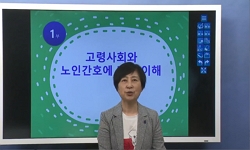<P><B>Purpose</B></P><P>Aging-induced loss of muscle mass and subsequent reduction of strength is a fundamental cause of frailty, functional decline, and disability. And this may lead to muscular dysfunction, voiding dysf...
http://chineseinput.net/에서 pinyin(병음)방식으로 중국어를 변환할 수 있습니다.
변환된 중국어를 복사하여 사용하시면 됩니다.
- 中文 을 입력하시려면 zhongwen을 입력하시고 space를누르시면됩니다.
- 北京 을 입력하시려면 beijing을 입력하시고 space를 누르시면 됩니다.



Aerobic Exercise Affects Myostatin Expression in Aged Rat Skeletal Muscles: A Possibility of Antiaging Effects of Aerobic Exercise Related With Pelvic Floor Muscle and Urethral Rhabdosphincter
한글로보기https://www.riss.kr/link?id=A107546499
- 저자
- 발행기관
- 학술지명
- 권호사항
-
발행연도
2014
-
작성언어
-
-
주제어
Aging ; Exercise ; Myostatin ; Skeletal muscle ; Muscle cell
-
등재정보
SCIE,SCOPUS,KCI등재
-
자료형태
학술저널
- 발행기관 URL
-
수록면
77-85(9쪽)
- 제공처
- 소장기관
-
0
상세조회 -
0
다운로드
부가정보
다국어 초록 (Multilingual Abstract)
<P><B>Purpose</B></P><P>Aging-induced loss of muscle mass and subsequent reduction of strength is a fundamental cause of frailty, functional decline, and disability. And this may lead to muscular dysfunction, voiding dysfunction, or urinary incontinence due to pelvic muscle weakness induced by aging. Physical exercise has been recommended for the prevention and the treatment of these age-related frail states. We investigated the effects of treadmill exercise on muscle strength, myostatin mRNA and protein expression, and gastrocnemius myocytes proliferation in aged rats to investigate the possible antiaging effects of aerobic exercise on skeletal muscles such as pelvic floor muscles and urethral rhabdosphincter muscle.</P><P><B>Methods</B></P><P>In this study, 5-month-old male Sprague-Dawley rats were used as the young-age group (n=20) and 24-month-old rats were used as the old-age group (n=20). Each group was randomly divided into two groups (n=10 in each group): the sedentary and the treadmill exercise group. The rats in the exercise groups were forced to run on a motorized treadmill for 30 minutes, once a day, for 6 weeks. For this study, a weight load test, hematoxylin and eosin staining, real-time and reverse transcription polymerase chain reaction for myostatin mRNA, myostatin western blot, and 5-bromo-2'-deoxyuridine immunohistochemistry were performed in the gastrocnemius muscle.</P><P><B>Results</B></P><P>The age-induced reduction of muscle mass and strength was associated with a decrease in myocyte proliferation and an increase in myostatin mRNA and protein expression in the gastrocnemius. However, treadmill exercise improved muscle mass and strength through suppression of myostatin mRNA and protein expression, and myocyte proliferation increase in the gastrocnemius against the aging process.</P><P><B>Conclusions</B></P><P>Aerobic exercise is a useful strategy for enhancing muscle function against aging-induced loss of skeletal muscle mass and functions.</P>
동일학술지(권/호) 다른 논문
-
Writing Science: How to Write Papers That Get Cited and Proposals That Get Funded
- 대한배뇨장애요실금학회
- 김진욱
- 2014
- SCIE,SCOPUS,KCI등재
-
- 대한배뇨장애요실금학회
- 홍성우
- 2014
- SCIE,SCOPUS,KCI등재
-
- 대한배뇨장애요실금학회
- Basant K. Puri
- 2014
- SCIE,SCOPUS,KCI등재
-
- 대한배뇨장애요실금학회
- 조성용
- 2014
- SCIE,SCOPUS,KCI등재




 ScienceON
ScienceON






